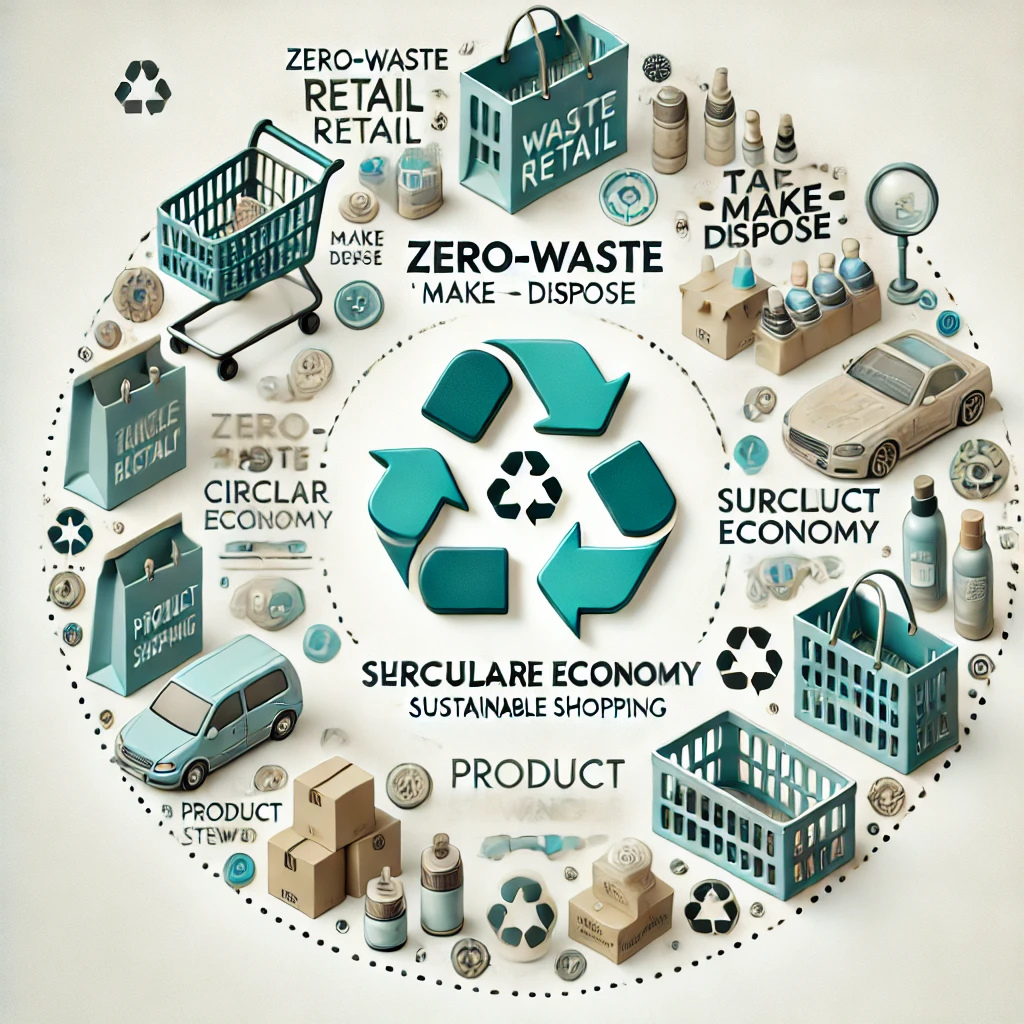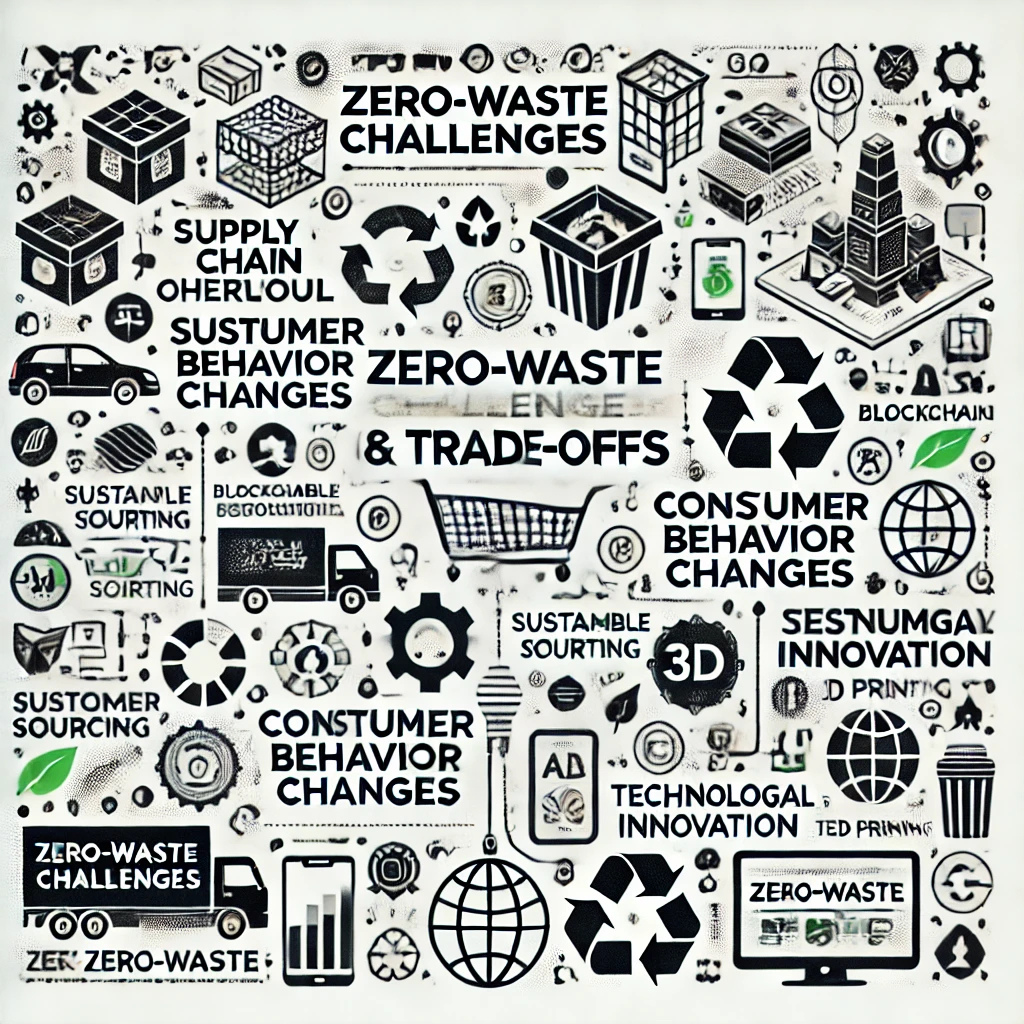Critical Analysis of Zero-Waste Retail and the Future of Sustainable Shopping
Circular Economy and Zero-Waste Retail: A Conceptual Shift
The retail industry, traditionally characterized by a linear consumption model—produce, sell, use, and discard—faces mounting pressure to adopt sustainable practices due to rising consumer awareness and environmental concerns. Zero-Waste Retail aligns with the principles of the Circular Economy (CE), which advocates for waste elimination, resource efficiency, and sustainability by closing the production loop through reuse, recycling, and product stewardship. This analysis explores the benefits and challenges of Zero-Waste Retail, focusing on its impact on operations, supply chains, consumer behavior, and the environment.
Circular Economy and Zero-Waste Retail: A Conceptual Shift
The Circular Economy promotes a restorative system designed to maintain the value of products, materials, and resources for as long as possible. In the context of Zero-Waste Retail, this model necessitates a shift from the "take-make-dispose" mindset toward processes that encourage product stewardship, where retailers, manufacturers, and consumers collaboratively minimize environmental impacts across the product life cycle. Retailers that adopt a zero-waste philosophy engage in product take-back schemes, encourage repair services, and promote recycling. For example, IKEA has launched an IKEA Circular Hub, where customers can buy, sell, or exchange secondhand products, thus promoting a circular economy (IKEA, 2023). Similarly, Nike has implemented the Nike Refurbished program, allowing customers to return used shoes for refurbishment and resale (Nike, 2023). While this model reduces waste and fosters sustainability, it also transforms the retail experience, positioning retailers as facilitators of closed-loop systems rather than mere distributors of new products.

Benefits of Zero-Waste Practices in Retail
From an operational perspective, Zero-Waste Retail can significantly reduce costs associated with waste management, packaging, and excess inventory. Lean supply chain management, which minimizes waste, enhances operational efficiency by reducing overproduction, transportation needs, and improving inventory control. Retailers implementing green supply chain management (GSCM) achieve waste reduction by collaborating with suppliers to ensure sustainable sourcing and minimal packaging. Retailers also benefit from enhanced brand loyalty as consumers increasingly favor companies demonstrating environmental responsibility (Jørgensen & Pedersen, 2018). For example, Lush Cosmetics has expanded its Naked line, offering products without packaging to minimize plastic waste, alongside an in-store recycling program (Lush, 2023). Another notable example is ThredUp, an online thrift store encouraging customers to sell their secondhand clothing, extending garment lifecycles and promoting a sustainable shopping option (ThredUp, 2023). Today's environmentally conscious consumers are often willing to pay a premium for sustainable products (White, Hardisty, & Habib, 2019). Zero-Waste Retail offers a unique selling proposition that resonates with this growing segment.
Challenges and Trade-Offs
Despite its advantages, transitioning to Zero-Waste Retail presents operational and financial challenges. Retailers must overhaul supply chains, rethink product design, and invest in new technologies, which require significant upfront costs (García-Muiña et al., 2019). Implementing reverse logistics—retrieving products for reuse or recycling—demands robust infrastructure and close supplier coordination, which can strain resources (Mishra, Hopkinson, & Tidridge, 2020). The consumer behavior barrier cannot be overlooked. While many customers prioritize sustainability, the zero-waste model often requires behavior changes, such as refilling containers or returning products for recycling. These additional steps may deter customers who prioritize convenience. Retailers must strike a balance between sustainability and customer convenience, potentially leveraging digital tools such as mobile apps to streamline processes (Sheth, Sethia, & Srinivas, 2011). Another critical issue lies in the availability of sustainable materials. While recyclable and biodegradable materials can reduce environmental impact, their limited availability or higher costs may pose challenges, especially for smaller retailers (Kirchherr, Reike, & Hekkert, 2017). Larger corporations may have a competitive edge in sourcing sustainable materials, leaving smaller players at a disadvantage.
Technological Innovation and the Future of Zero-Waste Retail
The future of Zero-Waste Retail will likely be driven by technological innovations that support circular supply chains and green manufacturing. Blockchain technology can enhance transparency and traceability in the supply chain, ensuring sustainable sourcing and production (Saberi, Kouhizadeh, Sarkis, & Shen, 2019). By providing clear views of product life cycles, retailers can engage consumers with detailed information about the environmental impact of their purchases. Additionally, 3D printing can revolutionize zero-waste production by enabling on-demand manufacturing, reducing excess inventory, and minimizing production waste. Retailers using artificial intelligence (AI) and data analytics can better predict demand, optimize inventory levels, and reduce overproduction, further contributing to waste reduction.
